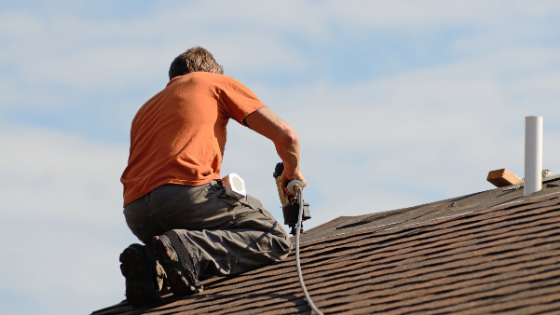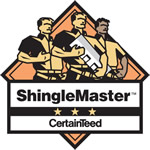Most Common Causes of Roof Leaks

As a homeowner having a perfect roof over your head can be the ultimate source of joy. The reverse is true, and the most stressful part of roofing may not be installation but maintenance. There are numerous roofing problems that a property owner can face ranging from a clogged gutter, missing shingles or improper installation. However, there is something most homeowners dread: a leaking roof. Water is a critical substance when confined to its areas of use, but when it intrudes some sections of our lives, such as the roof, the effects are devastating.
The leaking roof has damaging complications that require quick identification and repair to be averted. Therefore, as part of routine maintenance practices, signs of leaks like musty smell within rooms or water stains on the ceiling must be checked for regularly. In this piece, we are reviewing some of the causes of roof leaks commonly encountered.
1. Aging Roof
Each roofing material used for installation has its expected lifespan. Leaks can be an indicator that your roof’s durability is outlived. As a homeowner, you need to be aware of the life expectancies of various roofing materials before settling on one. This will ensure that you are ready to handle any problems relating to your roof’s age. Though asphalt shingles are the most common in the market, they have a shorter lifespan; hence an asphalt roof can begin leaking after the 20th birthday. Noteworthy, extreme weather conditions can hasten your roof’s aging, causing leaks earlier than expected.
2. Blocked Gutters
Located on the lower edges of the roof, gutters look as though they have little to do with the main roof. Notwithstanding, a clogged drain can be quite troublesome. Water cannot flow away and begins to seep under the ceiling. When the blockage is widespread, the whole cap can cause collapse due to water accumulation. Leaves and other debris should thus be removed from gutters regularly to maintain the health of your roof and prevent leakage.
Flashing Issues
Flashing refers to thin metal strips usually placed at suspected hotspots for leaking. A major area is around the chimney where they are placed at a right angle to cover any potential space between the roofing material and the chimney bricks. Two potential problems with flashing that may result in roof leaks is poor installation or aging in which it may crack or rust.
Roof Holes
Some roofing materials such as wood shingles are more prone to having defects than others like a concrete roof. Hole formation in the roof occurs following extreme environmental conditions like hail or damage by insects and algae. Algae or any other plant that might grow on the roof promotes rotting with a resultant hole. Roof cleaning is thereby a necessary preventive measure. Apart from the natural causes, holes can be caused by misplaced roofing nails. Small holes can be a major trap for the homeowner as they may seem to be of no impact on the roof and entire house. However, ignoring them can lead to a huge disaster.
As a homeowner, you can fix this issue yourself using flashing or contact an expert for full roof inspection and repair.
Vent Boot Damage
Vent boot is a waterproofing material usually used to close spaces between the plastic vent pipes protruding from the roof and the roofing material. It can be made from rubber, metal, rubber or a combination of any two. Destruction of the vent boot gives leeway for water inflow that may be cumulative.
Missing or Curled Shingles
When you enter a room, and you cannot ignore the mouldy smell emanating from it during a rainy season, you should first think of the shingles. Missing or curled shingles are the common culprits in the case of leaking roofs. The shingles can be destroyed during summer but discovered during winter when letting in the water. A keen homeowner should be able to identify shingle defects within a few days or less. Finding a shingle in your garden should be a sign that you need to perform the necessary maintenance action.
Intricate Roofing Style
Yes, a complicated roof architecture will indeed make you stand out, but it may also have the downsides. The rooflines need to be properly sealed without which doom may be impending. A critical feature of good roofing is drainage, but this may not be well achieved with elaborate designs. In the temperate areas, there is an increased likelihood of snow accumulating on the roof and forming ice dams. When these form, they cause water to seep under the shingles, thus roof leaks.
Damaged Chimney
Most chimneys are made of bricks that are held together by mortar. Even though the stack is one of the most durable parts of the roof, adverse atmospheric conditions can cause its deterioration in an indiscernible manner. The mortar can slowly be eroded, causing brick fallout. The chimney may not collapse immediately but will provide a route for water entry during the rainy seasons. In case you fail to do chimney inspection, you may only see water stains on your ceiling and inner wall but fail to find the source of the leak.
Spoiled Skylight Fitting
An expert will do an excellent job in fixing the skylight on your roof. This lights up the room and is a joy to the occupant. But a tragedy can strike. The seal around the roof window can dry out or be eroded and remain unnoticed until the rain comes. With the broken water barrier, rainwater finds its way through the roof into the house. In some instances, the skylight may be improperly installed, resulting in roof leaks from the word go.
Shiners
Shiners are frost-covered nails. During roof installation or repair, one or more roofing pins may miss the rafters and protrude into the attic. The nail can frost up during the cold periods giving it a shiny appearance. As the atmosphere warms up, the frost on the nail begins to melt and drips onto the ceiling. After some time, shiners may produce the same effect as active leaks. Of note, this phenomenon rarely occurs in a well-insulated attic.
Conclusion
A leaky roof requires immediate action. The first step in handling it is the identification of the cause. Regular roof maintenance exercises ensure you discover these culprits early before a serious complication develops.

In Awe Roofing Limited is an Award-Winning, family owned and operated Vancouver Roofing Contractor with over 17 years of roofing experience. We serve the entire Lower Mainland area, from Whistler to Chilliwack, employing a team of professional staff members. Our team has won numerous awards including Best of Homestars for the last five years, and Three Best Rated six years in a row. Learn more






















